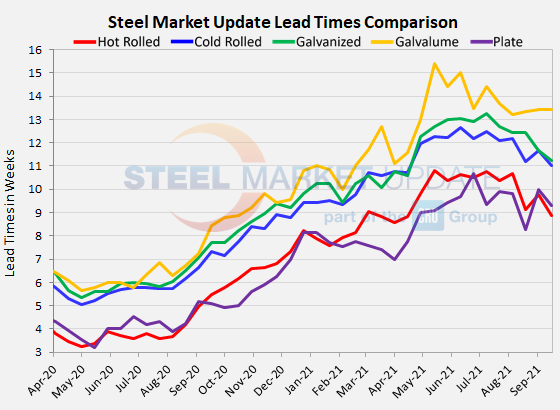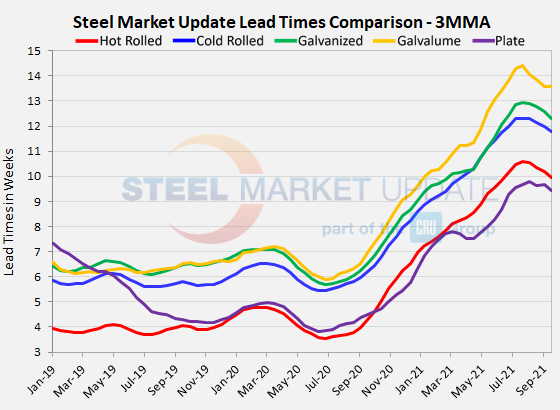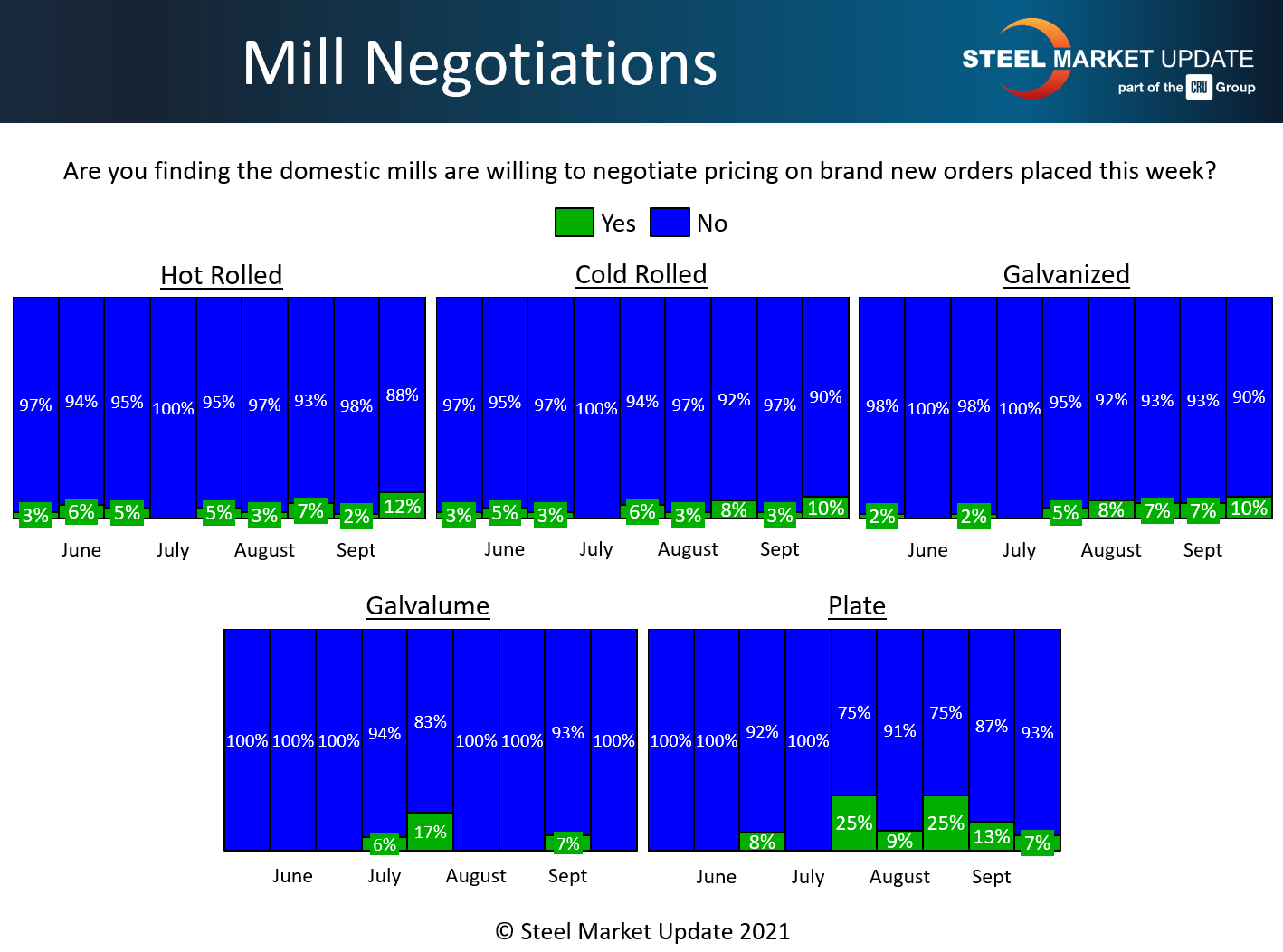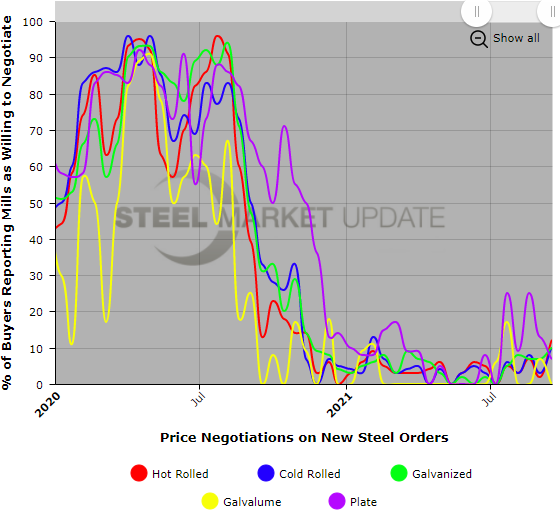SMU Data and Models

Steel Mill Lead Times: Finally Trending Down
Written by Tim Triplett
September 16, 2021
Lead times for spot orders of flat rolled and plate products from the mills have all seen notable declines this month, with the exception of Galvalume, according to Steel Market Update’s check of the market this week. The average lead time for hot rolled is now less than nine weeks, down from more than ten and a half weeks in early August. While lead times are still much longer than historical averages, shortening lead times are consistent with the trend in steel prices, which are beginning to level out.
Buyers reported mill lead times ranging from 6-13 weeks for hot rolled, 8-14 weeks for cold rolled, 6-16 weeks for galvanized, 12-16 weeks for Galvalume, and 5-14 weeks for plate.
The average lead time for spot orders of hot rolled declined by nearly a full week to 8.89 weeks, down from 9.79 weeks at the beginning of September.
Cold rolled lead times moved down to 11.00 weeks from 11.67 in the same period. Galvanized lead times dipped to 11.22 weeks from 11.67 weeks. The average Galvalume lead time was basically unchanged at 13.43 weeks.
Like flat rolled products, mill lead times for plate have also shortened. The average plate lead time moved down to 9.30 weeks from the 10.00 weeks seen in SMU’s poll of the market two weeks ago.

Three-month moving averages, which smooth out the weekly volatility of the lead times data, also show the trend toward shorter lead times. The 3MMA for hot rolled lead times now averages 9.93 weeks, cold rolled 11.76 weeks, galvanized 12.28 weeks, and Galvalume 13.59 weeks. Plate’s 3MMA is 9.44 weeks.

Lead times tend to be a leading indicator of steel prices. The shorter the lead times, the less busy the mills and the more likely they are to discount prices to win orders. Lead times still remain highly extended at roughly double those of a typical year, but have been widely expected to normalize as steel prices near a peak.
Negotiations
While the mills definitely still have the upper hand in price negotiations, buyers may finally be gaining some leverage. SMU asks buyers every two weeks if the mills are willing to talk price on spot orders. The percentage of hot rolled buyers answering “yes” has been in the single digits since November 2020, meaning more than 90% of the time the mills “just say no.” That is until this week when 12% indicated that some mills are now willing to consider discounts to secure HR orders. Cold rolled and galvanized have seen a similar shift, with 10% now reporting mills being more flexible on price. While subtle, this change in the tone of negotiations may reflect mills’ shrinking lead times and growing competition from imports.


By Tim Triplett, Tim@SteelMarketUpdate.com

Tim Triplett
Read more from Tim TriplettLatest in SMU Data and Models

SMU’s June at a glance
A look at SMU data for the month of June.

SMU Survey: Buyers’ Sentiment rebounds from multi-year low
Both of SMU’s Steel Buyers’ Sentiment Indices edged higher this week. Current Sentiment rebounded from a near five-year low, while Future Sentiment rose to a two-month high

SMU flat-rolled market survey results now available
SMU’s latest steel buyers market survey results are now available on our website to all premium members.

SMU Survey: Sheet lead times pull back after early-June blip, plate holds
Following the uptick seen two weeks ago, lead times eased this week for all four sheet products tracked by SMU, while plate lead times held steady, according to this week’s market survey.

SMU Survey: Pricing power abruptly shifts to steel buyers
The majority of steel buyers responding to our latest market survey say domestic mills are more willing to talk price on sheet and plate products than they were earlier this month. Sheet negotiation rates rebounded across the board compared to early June, while our plate negotiation rate hit a full 100%.
